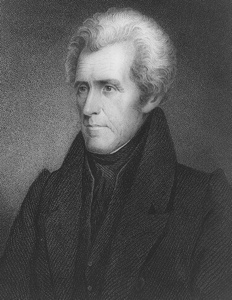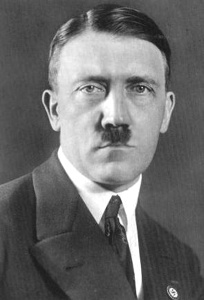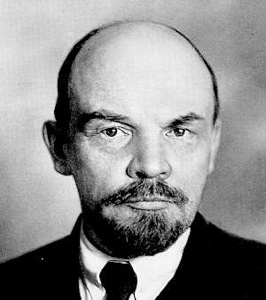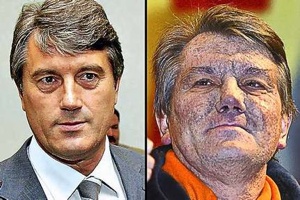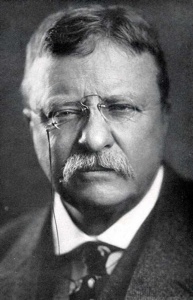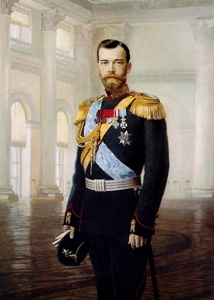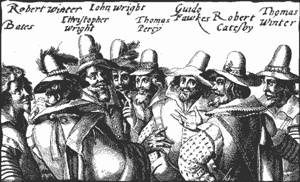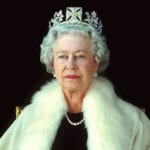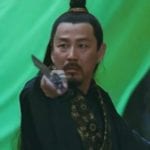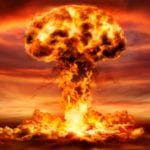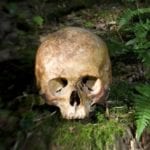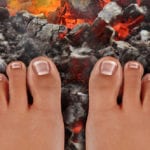 Music
Music  Music
Music  History
History 10 Less Than Jolly Events That Occurred on December 25
 Weird Stuff
Weird Stuff 10 Funny Ways That Researchers Overthink Christmas
 Politics
Politics 10 Political Scandals That Sent Crowds Into the Streets
 Weird Stuff
Weird Stuff Ten Bizarre Facts About The Doge Meme
 Our World
Our World 10 Ways Your Christmas Tree Is More Lit Than You Think
 Movies and TV
Movies and TV The 10 Coolest Stars to Set Sail on The Love Boat
 History
History 10 Things You Didn’t Know About the American National Anthem
 Technology
Technology Top 10 Everyday Tech Buzzwords That Hide a Darker Past
 Humans
Humans 10 Everyday Human Behaviors That Are Actually Survival Instincts
 Music
Music 10 Surprising Origin Stories of Your Favorite Holiday Songs
 History
History 10 Less Than Jolly Events That Occurred on December 25
 Weird Stuff
Weird Stuff 10 Funny Ways That Researchers Overthink Christmas
Who's Behind Listverse?

Jamie Frater
Head Editor
Jamie founded Listverse due to an insatiable desire to share fascinating, obscure, and bizarre facts. He has been a guest speaker on numerous national radio and television stations and is a five time published author.
More About Us Politics
Politics 10 Political Scandals That Sent Crowds Into the Streets
 Weird Stuff
Weird Stuff Ten Bizarre Facts About The Doge Meme
 Our World
Our World 10 Ways Your Christmas Tree Is More Lit Than You Think
 Movies and TV
Movies and TV The 10 Coolest Stars to Set Sail on The Love Boat
 History
History 10 Things You Didn’t Know About the American National Anthem
 Technology
Technology Top 10 Everyday Tech Buzzwords That Hide a Darker Past
 Humans
Humans 10 Everyday Human Behaviors That Are Actually Survival Instincts
Top 10 Assassination Attempts
This is a group of ten of the most famous assassination attempts. While several on the list eventually were killed, they thwarted an initial attack (or two) and lived to see another day. The top 10 Assassination Attempts.
10. Andrew Jackson
Andrew Jackson would become the first (and only US President) to personally beat the crap out of their would-be assassin. On January 30, 1835, President Jackson was attending the funeral of a South Carolina Representative when Richard Lawrence made his move. Lawrence fired two pistols at Jackson both misfired then the President charged at the man and began to beat him with his cane. It took several aides to restrain the 67-year-old Commander in Chief while Davey Crockett apprehended Lawrence.
Richard Lawrence was later declared not guilty by insanity and spent the rest of his life in the Government Hospital for the Insane. John Hinckley Jr would be housed here under it’s present name St. Elizabeths Hospital. (See #9)
9. Ronald Reagan
Upon watching the movie Taxi Driver approximately 15 times a man named John Hinckley Jr. became enamored with actress Jodie Foster. After several “rejections” on Foster’s part, Hinckley decided to kill the President of the United States. On March 30, 1981 Hinckley traveled to the Washington Hilton Hotel where Reagan was speaking that day. After Reagan had finished his speech and was about to drive away in his limousine six shots were fired.
One hit Press Secretary James Brady, another struck Washington DC officer Thomas Delahaney, and another hit Secret Service agent Timothy McCarthy. Two others hit the limousine and one ricocheted off the door of the limo traveling under Reagan’s left armpit. Many didn’t realize that the President had indeed been shot as he was shoved into the limo and driven away.
While his intended victim was rushed to the hospital Hinckley asked the police if the Academy Awards would be canceled that night, they were postponed until the next night. Reagan asked his surgeon if he was a republican, ironically Dr Joesph Giordano was a liberal democrat but proclaimed “we are all Republicans today.”
James Brady sustained the most damage from the attack, the bullet had hit his head and he was permanently disabled from the shot. The Brady Bill is named after him that carried a variety of gun control laws. Hinckley was found not guilty by reason of mental disease or defect the insanity defense was severely scrutinized and rewritten. As of December 2007 Hinckley has never regretted shooting the president claiming it “the greatest love offering in the history of the world.”
8. Adolf Hitler
The attempts on Hilter’s life are many and the July 20th Plot of 1944 is probably the most famous of attempts on Hitler’s life, it was also probably the closest to achieving its goal. The one chosen to attack Hitler was Claus von Stauffenberg. Stauffenberg was in command of the German Reserve Army; he had close personal access to Hitler and he often advised him militarily along with other top Nazi’s
On July 20th, Stauffenberg entered the conference room in Rastenburg, Germany. He planted the device at 12:10 hours and excused himself from the room. The bomb went off at 12:40 hours and Adolf Hitler escaped from the attack with only minor injuries. Stauffenberg fled to Rangsdorff Airport while the rest of the coconspirators were in panic. At 19:00 hours that night he and several others were captured. They were flown to Bendlerblock, Germany’s military headquarters and found guilty of high treason. Claus von Stauffenberg was shot at 1:00 hours on July 21, 1944. Some several hundred others were found guilty in mock trials over the next few months.
This story has been made into several films the newest of which is called Valkyire. It caused controversy in Germany over using Tom Cruise, a Scientologist in the lead role of a national hero. Bryan Singer of X-Men and The Usual Suspects fame is directing it.
7. V.I. Lenin
On August 30, 1918, Fanya Kaplan fired three shots at Vladimir Lenin after he finished a speech in a Moscow factory and was getting into his car. One bullet hit his shoulder and another entered his jaw, the third passed through his coat. The shots rendered him unconscious. Lenin was rushed to his Kremlin apartment and when he regained consciousness he refused to go to the hospital paranoid that he would be finished off there.
Kaplan was captured by the Cheka (the predecessor to the KGB) and issued this statement:
My name is Fanya Kaplan. Today I shot at Lenin. I did it on my own. I will not say from whom I obtained my revolver. I will give no details. I had resolved to kill Lenin long ago. I consider him a traitor to the Revolution. I was exiled to Akatui for participating in an assassination attempt against a Tsarist official in Kiev. I spent 11 years at hard labour. After the Revolution, I was freed. I favoured the Constituent Assembly and am still for it.
When Kaplan refused to give up any other co-conspirators she was executed on September 3, 1918. Lenin carried the bullet in his neck until the day he died.
6. Viktor Yushchenko
Viktor Yushchenko, the former Prime Minister of Ukraine announced his bid to run for President on the Independent ticket in 2004 against incumbent Viktor Yanukovych. In early September of 2004 Yushchenko was flown to Vienna, Austria and was diagnosed with “acute pancreatitis” due to “a serious viral infection and chemical substances that are not normally found in food products.” He was also plagued with jaundice and bloated pockmarks; after seeing his visage on television Dutch toxicologist Bram Brouwer contacted the Vienna hospital and told them to test for Dioxin. It was concluded that Yushchenko’s condition was indeed from “high concentrations of Dioxin,” with concentration measures about 1,000 times normal in the human body.
Some toxicologists claim that he had to have been poisoned at least 3-14 days before his admission. Yushchenko claims that he was poisoned at a dinner with the head of the Security Service of Ukraine that had occurred the night before his admission. Given the high levels of Dioxin in his blood work other toxicologists agree that this may have been the initial contact.
5. Pope John Paul II
On May 13, 1981, Pope John Paul II entered St. Peter’s Square to give a speech and Turkish gunman Mehmet Ali Agca shot at him. The shots hit his abdominal area. The Pope was pulled into the Vatican then rushed to Gemelli Hospital losing consciousness on the way. He was very near exsanguination upon arrival and spent 5 hours in surgery.
Afterwards the Holy Father said that Our Lady of Fatima protected him from death. In 2005 he was quoted saying, “for in everything that happened to me on that very day, I felt that extraordinary motherly protection and care, which turned out to be stronger than the deadly bullet.”
The shooter claimed he targeted the Pope because he was the ultimate symbol of capitalism. Agca was sentenced to life in prison but was pardoned in 2000 at Pope John Paul’s request. He was extradited to Turkey where he is serving time for crimes committed there.
Pope John Paul went on to a full recovery and full forgiveness. He visited Agca in December of 1983. The two reportedly spoke for 20 minutes, John Paul responded to inquiry saying, “I spoke to him as a brother whom I have pardoned and who has my complete trust.”
4. Benazir Bhutto
Benazir Bhutto was the first female Prime Minister of any Islamic Nation. She exiled herself for several years after charges of corruption in her ministry and counts of money laundering. In response to the 2007 elections Bhutto promised to return to Pakistan and run again.
On October 18, 2007, Benazir Bhutto arrived in Karachi, the largest city in Pakistan, to a welcoming crowd. Rumors had been spreading for weeks of an assassination attempt and as she was leaving the airport two bombs went off. Al-Qaeda supporters claimed responsibility for what was revealed to be suicide bombers. Bhutto was unharmed but in the blast 136 people were killed, about 50 were apart of her escort, and around 450 people were injured.
Bhutto indirectly blamed Musharraf for not having enough security on her before the attack and for safety reasons she was placed under house arrest by the government.
On December 27, 2007, another attempt was made on Bhutto’s life – this time it was successful.
3. Theodore Roosevelt
Theodore “Teddy” Roosevelt (also called TR) had already served two terms as president when he decided to run for the office again. On October 14, 1912, Teddy was campaigning in Milwaukee, Wisconsin and was about to give a speech when John Schrank shot at the former president. Roosevelt was indeed struck, the projectile passed through his speech and eyeglass case. It went through his skin but didn’t puncture the lung and as a skilled hunter he assessed that since he wasn’t coughing up blood this was the case.
He went on to deliver his speech anyways, blood seeping through his coat, and first said to the crowds, “I don’t know whether you fully understand that I have just been shot; but it takes more than that to kill a Bull Moose.” After the speech he went to the doctors where they determined that the bullet had penetrated three inches of skin and chest muscle. Since it was deemed more dangerous to remove the bullet Roosevelt carried the memento with him for the rest of his life.
Schank was admitted to a mental hospital in Wisconsin. He claimed it was both the ghost of William McKinley that told him to kill TR and he was also staunchly against anybody breaking George Washington’s presidential two-term precedence.
2. Tsar Nicholas II
Nicholas was not yet the Tsar (the Russian term for prince was Tsarevich) when he visited Japan in 1891 in commemoration of the opening of the Trans-Siberian Railroad. After riding the rail he made the trip over to the Japanese Isles with his cousin Prince George of Greece and Denmark.
He traveled through Kagoshima, then Nagasaki, Kobe and Kyoto. Nicholas was falling for the Japanese culture, it is said that he even got a Japanese tattoo. However on May 11, 1891 at Lake Biwa in Otsu, Tsuda Sanzo, one of the native escorts accompanying the two princes, attacked him. Tsuda’s first swing with a saber struck Nicholas’ forhead. The next was blocked by Prince George’s cane. Tsuda’s motive stems from the belief that he, as a strict Shinto believer, thought it was unholy for Nicholas, a Russian Orthodox, to be visiting holy sites as part of his tour.
The Tsarevich was rushed back to Kyoto then he demanded to go back to Russia. The Emperor saw Nicholas twice before he left the Kobe harbor and apologized profusely. The Russian government expressed satisfaction that Japan had handled the situation well. However some historians dispute that the incident was an underlying reason for the Russo-Japanese War in 1904 (one of the causes for the Russian Revolution).
1. The Gunpowder Plot
The head of the plot was actually Robert Catesby, Guy Fawkes was the one who was to prepare and plant the explosives in the House of Lords during the Parliament sessions. They would mine under a house that one of the plotters rented so that the explosives could be placed and set off when King James and other important Protestant members would be there.
On November 4, 1604 Guy Fawkes began loading the mines with the explosives while the other conspirators fled London. On the same day Lord Monteagle, a Catholic, tipped off Thomas Knyvet and an armed party. He had received a letter informing him to stay away from the House.
At midnight on November 5 Guy Fawkes was taken in to custody. Over the next few days other coconspirators were captured. On January 31, Fawkes and several others were taken to Westminster where they were to be hung, then drawn and quartered. Fawkes “cheated” he jumped from the gallows and successfully broke his neck avoiding the pain of being drawn and quartered. Another conspirator, Robert Keyes, tried the same thing but was unsuccessful and was very much awake and alive for the second half of the execution.
Contributor: GingerLee
